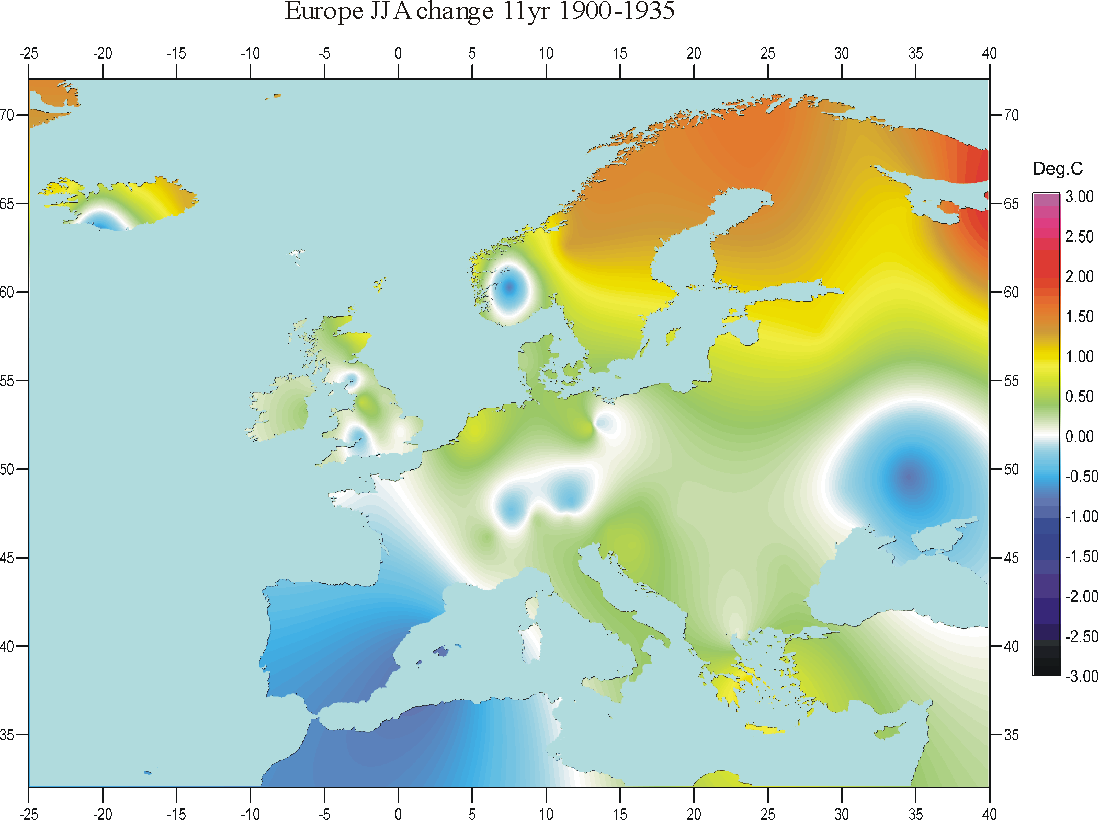

Surface air temperature changes June-August 1900-1935 estimated as the difference between the simple 11yr means for the periods 1895-1905 and 1930-1940. Longitudes and latitudes are indicated along the axis of the diagram.
Summer (June-August)
The period 1900-1935 is generally in Europe recognised as a period
of rapid warming after the end of the Little Ice Age. The summer conditions
appear to have been characterised by warmer conditions over most over Europe,
with the exception of the Iberian Peninsula and southwestern France. Also an
area north of the Black Sea show a cooling tendency during this period.
| PERIOD | 1870-1895 | 1930-1949 | 1950-1959 |
| Average length of the growing season at Oxford, central England (range of the decade averages). Growing season is here defined as days with average temperatures above 5.5oC. | 255-265 days | 270-275 days | 265 days |
| Shortest growing seasons at Oxford (shortest each decade) | 205-225 days | 237-243 days | 226 days |
Source: Lamb 1977.